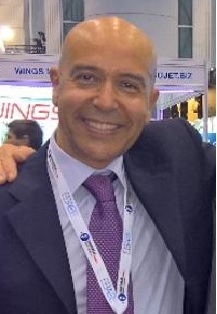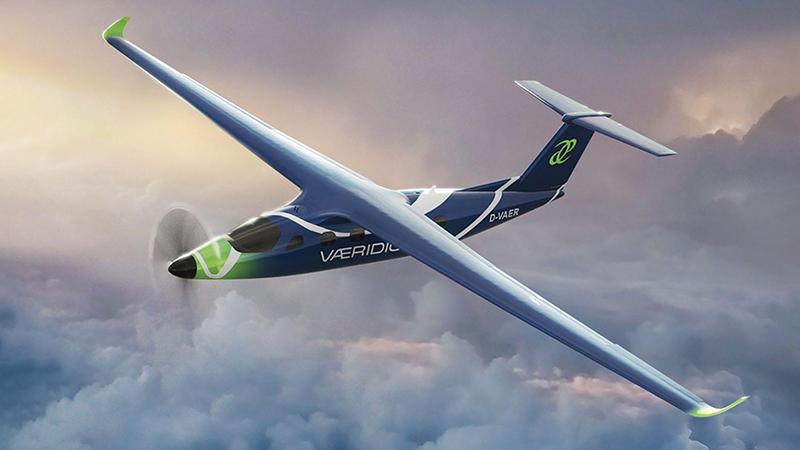Europes eVTOL Slump Sparks Shift To Electric Regional Aviation
Details
More Products & Services
Products & Services
Home - Aviation Group Marketing
Aviation Week Network
120 data points on over 156,000 commercial and business aviation aircraft, including military transports. Discover the most trustworthy resource for the complete aircraft history, plus ad hoc reports, month-over-month trend analysis and details on expected deliveries through 2050.
Aerospace | Aviation Week Network
Aviation Week Network
https://aviationweek.com/themes/custom/particle/dist/app-drupal/assets/awn-logo.svg
People

Andrea Rossi Prudente
Aviation Week Network

Anthony Lim
Aviation Week Network
Sales director

Becca Balmes
Aviation Week Network

Belinda Tan
Aviation Week Network

Brian Everstine
Aviation Week Network
Editor

Eddie Krankowski
Aviation Week Network
Assistant Manager, Tradeshows

erving dockery
Aviation Week Network

Lisa Tan
Aviation Week Network
Senior Marketing Manager

Mark Thomas
Aviation Week Network
Description
Europe may have lost its pole position in the race to develop and certify electric vertical-takeoff-and-landing air taxis, but electric aviation aspirants continue to push forward with more conventional tube-and-wing designs.
It was not long ago that Europe was considered a world leader in the advanced air mobility (AAM) scene. The European Union Aviation Safety Agency (EASA) was the world's first civil aviation regulator to craft rules for electric vertical-takeoff-and-landing (eVTOL) operations when it issued its Special Condition for VTOL rule set in 2019. The German market in particular showed tremendous promise, with Volocopter seeking to be the first Western startup to certify with its two-seat VoloCity, and Lilium aiming to follow in its footsteps with the six-passenger Lilium Jet.
Now, following the collapse of Lilium and the sale of Volocopter to China's Wanfeng Group for pennies on the dollar, UK startup Vertical Aerospace appears to be the sole remaining credible air taxi startup in Europe. And considering Vertical Aerospace's persistent financial struggles, some industry-watchers see such U.S. companies as Archer and Joby Aviation as poised to dominate Europe's AAM market, raising the specter that the continent's domestic manufacturers will be shut out of their own air taxi market.Following startup failures, Vertical Aerospace is Europe's last major eVTOL contenderElectric aviation aspirants look to regional air mobility as a more viable option
Recriminations have swirled among proponents of AAM in Europe following the collapse of Lilium and sale of Volocopter. Some suggest the venture capital market in Europe is far too risk-averse to support the cash-intensive, highly speculative air taxi industry. Others critique the region as overregulated, observing that EASA had set the design assurance level for eVTOL to 10-9, or one catastrophic failure in 1 billion flight hours, while the FAA adopted a flexible, performance-based standard.
Some commentators also note that Europe has less need for urban air mobility (UAM), given its far more developed ground transport and public transit networks compared with the U.S.
“These [eVTOLs] are so expensive that I don't think Europe has the wherewithal in their market to support them,” says Sergio Cecutta, founder and partner with SMG Consulting. “There's always been more appetite for risk in the U.S. when it comes to funding startup companies. You could say the U.S. takes a glass-half-full mentality, and the Europeans are glass-half-empty. . . . But the other thing is that the business case for urban air mobility is tougher in Europe for the simple reason that they have a lot more transportation options than the U.S.”
Robin Riedel, an analyst at McKinsey who specializes in AAM, echoes those sentiments. “Europe is tough,” he says. “The environment here [in the U.S.]—getting the right engineers, getting the mindset to build new things, getting the funding, getting the government support—is just stronger than it is in Europe.” China's Wanfeng Group acquired Volocopter for just €10 million ($11.4 million). Credit: Volocopter
Despite the turmoil, European industry has hardly budged from its efforts at electrifying aviation, even if it may have backed away from the eVTOL race. A host of startups developing runway-based, electric conventional-takeoff-and-landing (eCTOL) aircraft say they can target a more viable mission set than the eVTOL-makers—and at a fraction of the price.
These include Vaeridion, a German startup developing a nine-passenger electric regional aircraft called the Microliner; Aura Aero, a French company developing a family of hybrid electric aircraft, beginning with a two-seat trainer; Germany's Maeve, developing a hybrid airliner in the 80-seat class; and Elfly, a Norwegian company developing a nine-passenger electric seaplane, among many others. Heart Aerospace, formerly of Sweden, was Europe's best-funded eCTOL startup, but the company defected to the U.S. this year, in part for the more advanced technology and venture capital ecosystem.
While the U.S. industry is most excited about UAM, these European aspirants are instead targeting regional air mobility (RAM). Phrased differently, they see a major opportunity to connect underserved airfields with point-to-point routes using smaller electric aircraft with lower operating costs, revitalizing markets and routes that were not commercially viable with conventionally powered aviation.
Europe's RAM momentum appears to be boosted by a confluence of factors, such as political schemes to disincentivize conventional aviation, a greater familiarity with small turboprops and a cultural aversion to long-distance driving compared with the U.S.
“Regional air mobility seems to have more traction in Europe than urban air mobility and even more traction in Europe than in the U.S.,” Cecutta says. “And more and more, these companies are becoming practical. Now they are talking about rightsizing a specific route or reopening a route that existed before. . . . It's becoming more about developing a replacement for existing aircraft that really don't do their job well today—and that's something with a lot of appeal.”
Other European startups are continuing to pursue eVTOLs, such as Ascendance and VoltAero in France, Sirius Aviation in Switzerland, and Lyte Aviation and Sora Aviation in the UK. But these cash-strapped companies will face an uphill climb in raising the estimated $1-2 billion needed to certify an eVTOL, according to SMG Consulting.
To be sure, even the eCTOL hopefuls will struggle to raise the cash for certification. SMG Consulting estimates that certifying an eCTOL would cost around $350 million for a nine-passenger aircraft and $700 million for 19 passengers—dwarfing the relatively meager sums that the upstarts have raised to date.
Despite the downbeat mood among industry-watchers, Europe's handful of surviving eVTOL players insists plans remain firmly on track. Even Volocopter, under its new ownership as a private company, says it still intends to certify the VoloCity, although its target has been pushed back to 2026.
The paucity of credible eVTOL startups also means regulators, such as the UK Civil Aviation Authority and EASA, should have plenty of available bandwidth to devote to type certification efforts, Vertical Aerospace CEO Stuart Simpson says.
He also notes that Vertical has been able to hire more than 100 engineers from Lilium, Volocopter and other defunct European startups.
“We're really the last man standing,” Simpson says. “We were the only focus in the UK; we now have the only focus in Europe, as well. That's a good thing. The regulators in Europe have the capacity, knowledge and a massive desire to certify these aircraft. That desire is still there, and we're capitalizing on it.”
It was not long ago that Europe was considered a world leader in the advanced air mobility (AAM) scene. The European Union Aviation Safety Agency (EASA) was the world's first civil aviation regulator to craft rules for electric vertical-takeoff-and-landing (eVTOL) operations when it issued its Special Condition for VTOL rule set in 2019. The German market in particular showed tremendous promise, with Volocopter seeking to be the first Western startup to certify with its two-seat VoloCity, and Lilium aiming to follow in its footsteps with the six-passenger Lilium Jet.
Now, following the collapse of Lilium and the sale of Volocopter to China's Wanfeng Group for pennies on the dollar, UK startup Vertical Aerospace appears to be the sole remaining credible air taxi startup in Europe. And considering Vertical Aerospace's persistent financial struggles, some industry-watchers see such U.S. companies as Archer and Joby Aviation as poised to dominate Europe's AAM market, raising the specter that the continent's domestic manufacturers will be shut out of their own air taxi market.Following startup failures, Vertical Aerospace is Europe's last major eVTOL contenderElectric aviation aspirants look to regional air mobility as a more viable option
Recriminations have swirled among proponents of AAM in Europe following the collapse of Lilium and sale of Volocopter. Some suggest the venture capital market in Europe is far too risk-averse to support the cash-intensive, highly speculative air taxi industry. Others critique the region as overregulated, observing that EASA had set the design assurance level for eVTOL to 10-9, or one catastrophic failure in 1 billion flight hours, while the FAA adopted a flexible, performance-based standard.
Some commentators also note that Europe has less need for urban air mobility (UAM), given its far more developed ground transport and public transit networks compared with the U.S.
“These [eVTOLs] are so expensive that I don't think Europe has the wherewithal in their market to support them,” says Sergio Cecutta, founder and partner with SMG Consulting. “There's always been more appetite for risk in the U.S. when it comes to funding startup companies. You could say the U.S. takes a glass-half-full mentality, and the Europeans are glass-half-empty. . . . But the other thing is that the business case for urban air mobility is tougher in Europe for the simple reason that they have a lot more transportation options than the U.S.”
Robin Riedel, an analyst at McKinsey who specializes in AAM, echoes those sentiments. “Europe is tough,” he says. “The environment here [in the U.S.]—getting the right engineers, getting the mindset to build new things, getting the funding, getting the government support—is just stronger than it is in Europe.” China's Wanfeng Group acquired Volocopter for just €10 million ($11.4 million). Credit: Volocopter
Despite the turmoil, European industry has hardly budged from its efforts at electrifying aviation, even if it may have backed away from the eVTOL race. A host of startups developing runway-based, electric conventional-takeoff-and-landing (eCTOL) aircraft say they can target a more viable mission set than the eVTOL-makers—and at a fraction of the price.
These include Vaeridion, a German startup developing a nine-passenger electric regional aircraft called the Microliner; Aura Aero, a French company developing a family of hybrid electric aircraft, beginning with a two-seat trainer; Germany's Maeve, developing a hybrid airliner in the 80-seat class; and Elfly, a Norwegian company developing a nine-passenger electric seaplane, among many others. Heart Aerospace, formerly of Sweden, was Europe's best-funded eCTOL startup, but the company defected to the U.S. this year, in part for the more advanced technology and venture capital ecosystem.
While the U.S. industry is most excited about UAM, these European aspirants are instead targeting regional air mobility (RAM). Phrased differently, they see a major opportunity to connect underserved airfields with point-to-point routes using smaller electric aircraft with lower operating costs, revitalizing markets and routes that were not commercially viable with conventionally powered aviation.
Europe's RAM momentum appears to be boosted by a confluence of factors, such as political schemes to disincentivize conventional aviation, a greater familiarity with small turboprops and a cultural aversion to long-distance driving compared with the U.S.
“Regional air mobility seems to have more traction in Europe than urban air mobility and even more traction in Europe than in the U.S.,” Cecutta says. “And more and more, these companies are becoming practical. Now they are talking about rightsizing a specific route or reopening a route that existed before. . . . It's becoming more about developing a replacement for existing aircraft that really don't do their job well today—and that's something with a lot of appeal.”
Other European startups are continuing to pursue eVTOLs, such as Ascendance and VoltAero in France, Sirius Aviation in Switzerland, and Lyte Aviation and Sora Aviation in the UK. But these cash-strapped companies will face an uphill climb in raising the estimated $1-2 billion needed to certify an eVTOL, according to SMG Consulting.
To be sure, even the eCTOL hopefuls will struggle to raise the cash for certification. SMG Consulting estimates that certifying an eCTOL would cost around $350 million for a nine-passenger aircraft and $700 million for 19 passengers—dwarfing the relatively meager sums that the upstarts have raised to date.
Despite the downbeat mood among industry-watchers, Europe's handful of surviving eVTOL players insists plans remain firmly on track. Even Volocopter, under its new ownership as a private company, says it still intends to certify the VoloCity, although its target has been pushed back to 2026.
The paucity of credible eVTOL startups also means regulators, such as the UK Civil Aviation Authority and EASA, should have plenty of available bandwidth to devote to type certification efforts, Vertical Aerospace CEO Stuart Simpson says.
He also notes that Vertical has been able to hire more than 100 engineers from Lilium, Volocopter and other defunct European startups.
“We're really the last man standing,” Simpson says. “We were the only focus in the UK; we now have the only focus in Europe, as well. That's a good thing. The regulators in Europe have the capacity, knowledge and a massive desire to certify these aircraft. That desire is still there, and we're capitalizing on it.”

Share
Recent Chats
Share via email
Future: handle WhatsApp here
Future: handle LinkedIn here
Future: handle Twitter here
SUBMENU HERE
Share via Chat
Copy Link

